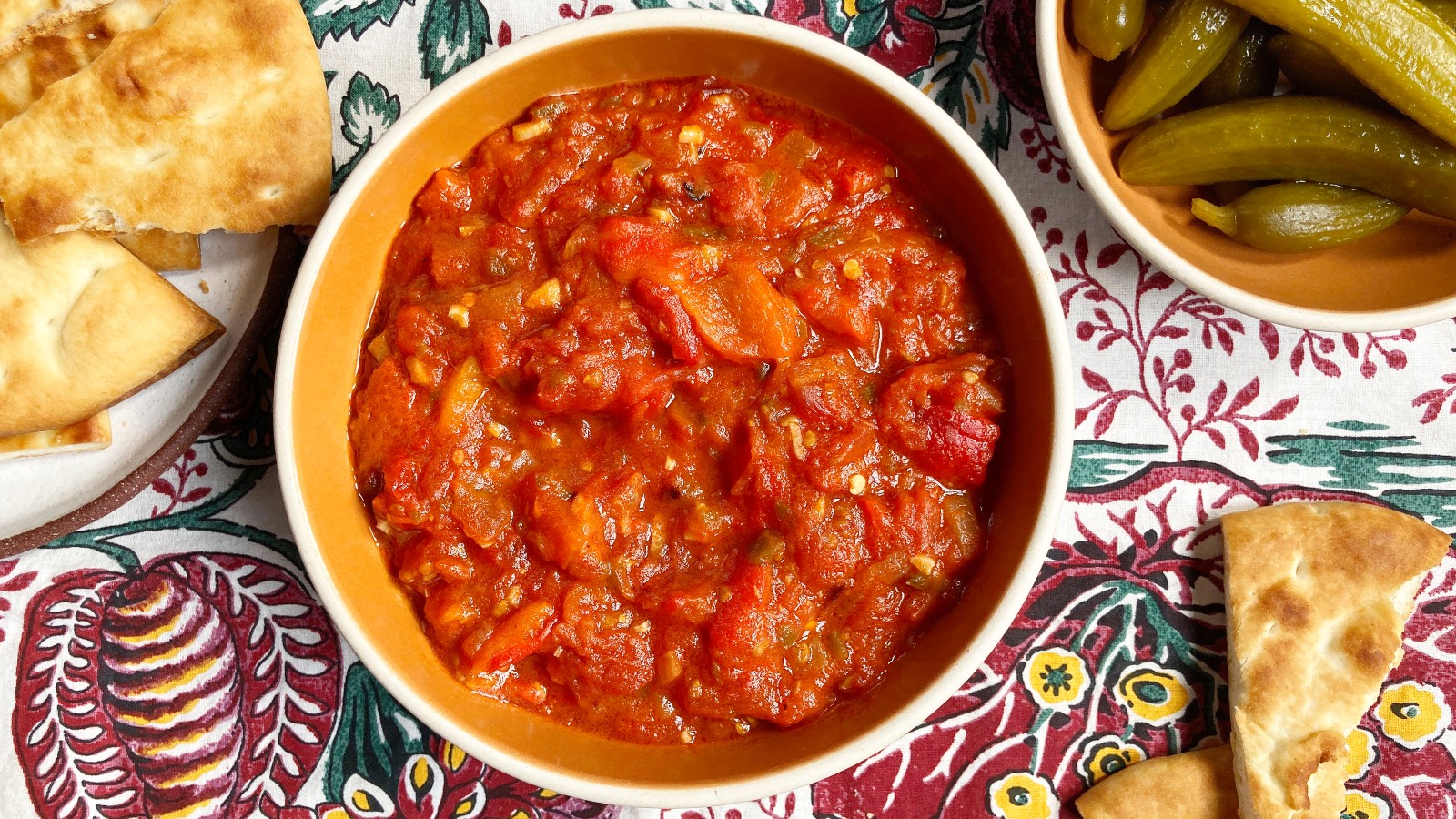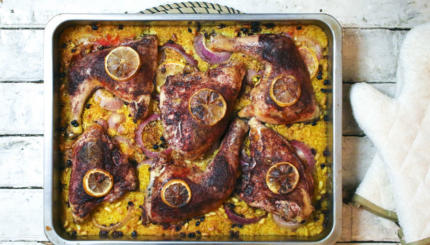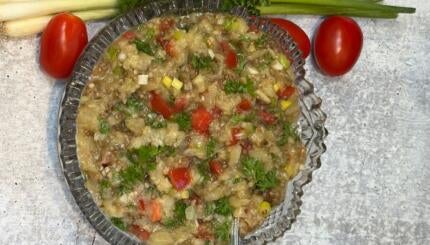Nostalgic, colorful, spiced, comforting, diasporic and deeply rooted in centuries of history — these are some of the words and ideas that best capture the essence of Sephardic cuisine. Each dish — from boyos to adafina to borekas — tells a story, carrying layers of cultural memory, migration, adaptation and survival.
But what do we mean by Sephardic food? To truly appreciate that label, one must first understand the complex origins of the term “Sephardic” and the historical circumstances that shaped it.
Defining Sephardic Cuisine
Sephardic is more than a mere geographical or ethnic label. It originates from the Hebrew term for Spain, and historically it referred to the Jews of the Iberian Peninsula. Yet its meaning extends beyond the borders of Spain and Portugal, and encompasses all Jews descended from those communities, including those who fled or were expelled following the Alhambra Decree of 1492. Sephardic identity is therefore rooted in a specific land and moment in history, while simultaneously reflecting centuries of migration and adaptation across Europe, North Africa, the Mediterranean and the Americas.
To understand Sephardic cuisine, one must go back to the earliest written sources of Jewish culinary practice. The oldest known Western cookbook containing recipes explicitly identified as Jewish dates to the 13th century in southern Spain. Written anonymously in Arabic, this manuscript is called “Kitāb al-ṭabīẖ“—“The Book of Cooking.” Within its pages, six recipes explicitly reference the word “Jew” (yahud) in their titles.
With your help, My Jewish Learning can provide endless opportunities for learning, connection and discovery.
Among these were two chicken dishes, two partridge preparations, one minced-meat layered egg cake and a stuffed eggplant recipe. While most of these early recipes did not survive into contemporary Sephardic culinary practice, the eggplant dish endures, mainly in the Mediterranean and Turkish Jewish communities. Eggplant, in fact, became strongly associated with Spanish Jews.
Jewish Food and Identity During the Inquisition
Historical records — including Inquisition trials beginning in 1481 — show that inquisitors and neighbors often used eggplant consumption as a marker of Jewish identity. Famous Spanish writers, such as Cervantes or Quevedo, did the same, and often used irony to mock the food practices of the conversos, Spanish Jews who had officially converted to Christianity but secretly maintained Jewish rituals and dietary practices.
Since the Inquisition trials targeted the conversos (also called crypto-Jews), food became both a source of identity and a tool for survival: They had to conceal forbidden practices and invent culinary approaches to avoid suspicion, particularly concerning pork, which was both a dietary staple of Christians and a taboo for Jews.
By the late 15th century, the term “Sephardic cuisine” was already emerging, defined not only by flavors and ingredients but also by strategy and necessity. Olive oil often replaced pork fat, and eggplant and other vegetables substituted for meat. Unleavened bread — traditionally reserved for Passover — found its way into other meals. Ingredients like garlic, chickpeas and Swiss chard were not only flavorful, but also culturally coded, subtly signaling Jewish identity even under oppression. What was once a potential marker of persecution became central to Sephardic culinary tradition, helping sustain the community’s culture through difficult times.
Sephardic Food Transcends Borders
The expulsion from Spain in 1492 dispersed Sephardic Jews, creating a rich tapestry of regional variations while preserving a shared culinary memory. Communities carried their traditions into Italy, the Ottoman Empire, Morocco, the Mediterranean basin, and even across the Atlantic to the Americas. Often, these migrations had to be clandestine, as Catholic monarchs actively prohibited Jewish settlement abroad to prevent the spread of Judaism. Yet wherever Sephardic Jews settled, they maintained and adapted their foodways, blending old recipes with locally available ingredients.
The influence of these migrations is evident in the evolution of specific dishes. Spanish nuegados, a type of honeyed fritter mentioned in Inquisition documents, continued their journey, or at least were identified as pignolata, in Italian Inquisition trials. Unleavened breads evolved into maize-based variants in the New World, adapting to crops unavailable in Europe. Pastries such as hojuelas, thin, fried and soaked in honey, remain popular from Spain to Tunisia to Argentina.
Similarly, bimuelos, fried dough balls drizzled with honey, have been enjoyed by Sephardic Jews from the Ottoman Empire to Spain since at least the 16th century. Iconic dishes like mufleta — a Moroccan bread that dates back to the 13th century — continue to grace tables during Shabbat, Mimouna, and other festival celebrations, linking contemporary kitchens directly to centuries of Sephardic tradition.
Keeping Sephardic Cuisine Alive
Sephardic Jews continually negotiated their food practices to adhere to both religious laws and the demands of the dominant cultures surrounding them. From the 15th century onward, this process produced a cuisine that was simultaneously Jewish and stealthily Christian in appearance — carefully calibrated to avoid scrutiny from inquisitors and neighbors alike.
Festivals and religious observances played a key role in preserving these culinary traditions. Holiday tables became living archives, reinforcing continuity, safeguarding culture, memory and identity in exile, and ensuring that Sephardic cuisine remained vibrant for generations to come.
For converso families, the culinary strategies were elaborate. Dried sausages made from bread and chicken could mimic pork sausages once cured. Flatbreads were prepared with olive oil instead of lard. Well-cooked beef could pass visually and texturally as pork. Even religious celebrations were adapted. For example, a Sukkot banquet, with its carefully arranged branches, fruits and symbolic dishes, might have been staged to appear as a tribute to a prison warden in 1603 during the Mexican Inquisition.
These strategies, recorded meticulously in Inquisition trial documents, mark a turning point in the development of Sephardic cuisine after 1492. The adaptability of Sephardic cuisine did not dilute its identity; instead, it fostered a culinary resilience that allowed it to flourish across continents.
Sephardic Cuisine Today
Sephardic cuisine is present in every community where the Jews from Spain and the diaspora settled, from 1492 to today — from Italy, the Balkans, the Maghreb and Turkey to the Americas.
Today in Israel, Sephardic traditions are woven into the national palate. Spices once brought from the Maghreb or Turkey — cinnamon, cumin, honey, eggplant, spinach and orange blossom — now season everyday Israeli dishes. Fried foods like isfeng (or sfeng) donuts, made for Hanukkah by Moroccan Jews, trace their roots to 13th-century Spain and remain festive favorites. The same goes for a chickpea croquette recipe. But adaptation is also a marker of Sephardi cuisine, and matbucha, a North African tomato and pepper stew, is a great example of this.
In understanding and tasting Sephardic cuisine, we see how food travels, adapts and persists. Sephardic cuisine is, above all, a story on a plate: one that continues to be written every time we gather with family and friends to share its flavors, its history, and its soul.



